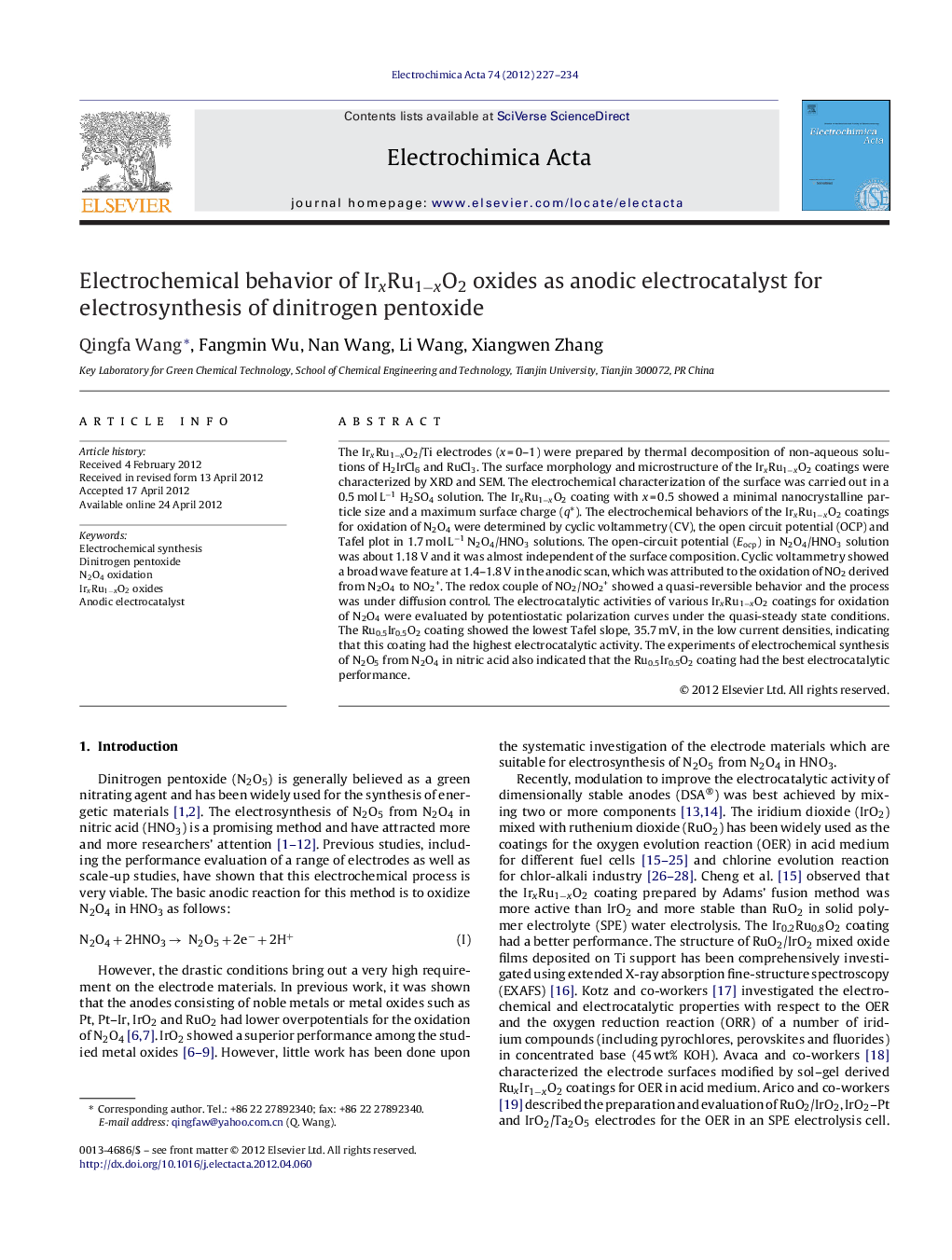| Article ID | Journal | Published Year | Pages | File Type |
|---|---|---|---|---|
| 188576 | Electrochimica Acta | 2012 | 8 Pages |
The IrxRu1−xO2/Ti electrodes (x = 0–1) were prepared by thermal decomposition of non-aqueous solutions of H2IrCl6 and RuCl3. The surface morphology and microstructure of the IrxRu1−xO2 coatings were characterized by XRD and SEM. The electrochemical characterization of the surface was carried out in a 0.5 mol L−1 H2SO4 solution. The IrxRu1−xO2 coating with x = 0.5 showed a minimal nanocrystalline particle size and a maximum surface charge (q*). The electrochemical behaviors of the IrxRu1−xO2 coatings for oxidation of N2O4 were determined by cyclic voltammetry (CV), the open circuit potential (OCP) and Tafel plot in 1.7 mol L−1 N2O4/HNO3 solutions. The open-circuit potential (Eocp) in N2O4/HNO3 solution was about 1.18 V and it was almost independent of the surface composition. Cyclic voltammetry showed a broad wave feature at 1.4–1.8 V in the anodic scan, which was attributed to the oxidation of NO2 derived from N2O4 to NO2+. The redox couple of NO2/NO2+ showed a quasi-reversible behavior and the process was under diffusion control. The electrocatalytic activities of various IrxRu1−xO2 coatings for oxidation of N2O4 were evaluated by potentiostatic polarization curves under the quasi-steady state conditions. The Ru0.5Ir0.5O2 coating showed the lowest Tafel slope, 35.7 mV, in the low current densities, indicating that this coating had the highest electrocatalytic activity. The experiments of electrochemical synthesis of N2O5 from N2O4 in nitric acid also indicated that the Ru0.5Ir0.5O2 coating had the best electrocatalytic performance.
Graphical abstractFigure optionsDownload full-size imageDownload as PowerPoint slide
